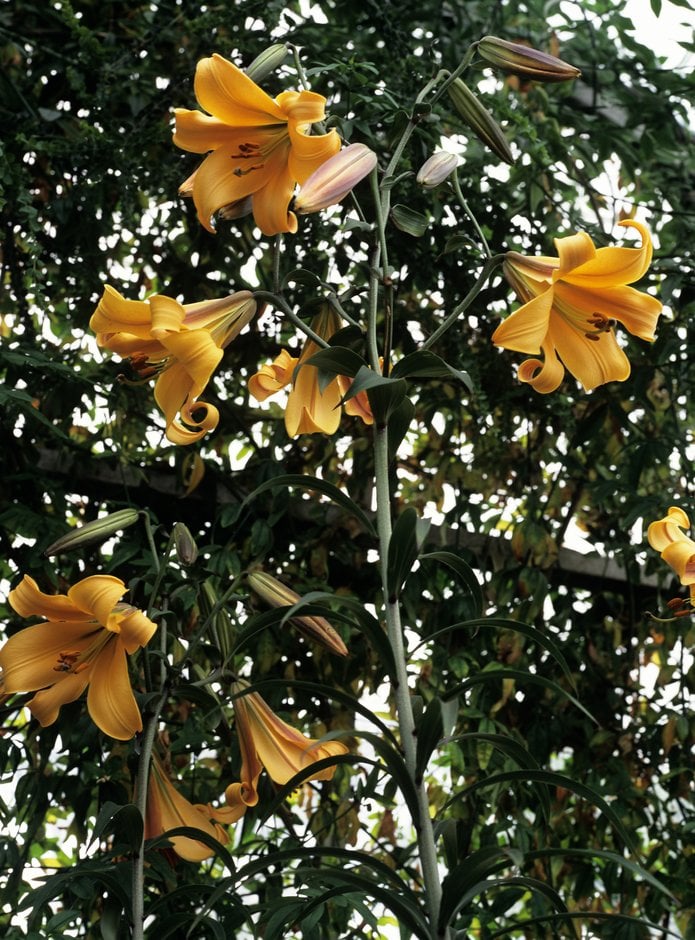Lilium 'Vico Queen' (VI-/a)
lily 'Vico Queen'
a trumpet lily, a bulbous herbaceous perennial about 1.8-2m high, with spiralling green leaves, and pyramidal racemes of up to twelve powerfully scented, slightly pendent, outward-facing, trumpet-shaped flowers, up to 15cm long, which are golden-orange with a reddish-brown flush on the outside, in midsummer

Size
Ultimate height
1.5–2.5 metresTime to ultimate height
2–5 yearsUltimate spread
0.1–0.5 metresGrowing conditions
Moisture
Moist but well–drainedpH
Acid, Alkaline, NeutralColour & scent
| Stem | Flower | Foliage | Fruit | |
| Spring | Green | |||
|---|---|---|---|---|
| Summer | Gold Orange Red Brown | Green | ||
| Autumn | Green | |||
| Winter |
Position
- Partial shade
Aspect
South–facing or East–facing or West–facing
Exposure
Sheltered Hardiness
H6Botanical details
- Family
- Liliaceae
- Native to GB / Ireland
- No
- Foliage
- Deciduous
- Habit
- Clump forming
- Potentially harmful
- Ornamental bulbs - not to be eaten. Wear gloves and other protective equipment when handling. TOXIC to pets if eaten (cats) - see the HTA guide to potentially harmful plants for further information and useful contact numbers
- Genus
Lilium are bulbous perennials with erect stems bearing whorled or spirally arranged leaves and terminal racemes or umbels of bowl-shaped, trumpet-shaped, funnel-shaped or turks cap shaped flowers, often fragrant, and white, yellow, orange or red
- Name status
Accepted
- Horticultural Group
- These tall, trumpet-shaped lilies are easy to grow with large, fragrant flowers in yellow, white, orange and pink
How to grow
Cultivation
Plant bulbs in autumn, 15cm deep, in moist but well-drained soil enriched with leaf mould or well-rotted organic matter, in a sheltered position, with the base of the plant in shade, for example from ground-cover plants, and the rest of the plant in full sun or light dappled shade
Propagation
Propagate by division: detach offset bulblets when the leaves die down and plants become dormant, and pot them on
Suggested planting locations and garden types
- City and courtyard gardens
- Cottage and informal garden
- Cut flowers
- Flower borders and beds
Pruning
No pruning required
Pests
May be susceptible to lily beetle, aphids, slugs, snails, thrips, leatherjackets, and wireworms, and by rabbits and voles; plants in containers may be susceptible to vine weevil
Diseases
May be susceptible to lily disease, other fungal diseases, and virus diseases; for more advice, see lily diseases
Get involved
The Royal Horticultural Society is the UK’s leading gardening charity. We aim to enrich everyone’s life through plants, and make the UK a greener and more beautiful place.